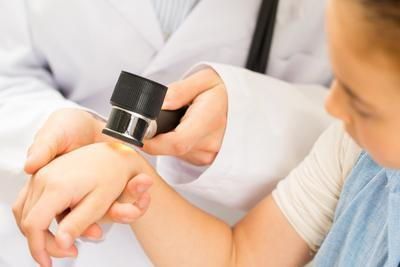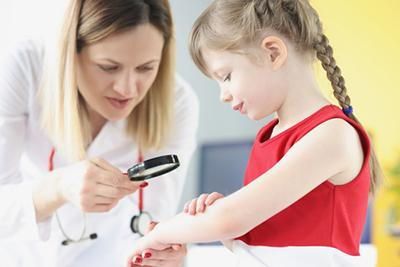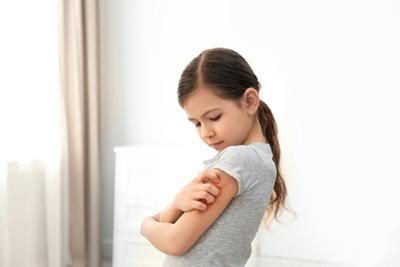When we think of childhood health, skin cancer may not be the first concern that comes to mind. But with more families spending time outdoors—and increasing sun exposure year-round—it’s important to know how to protect your child’s skin and recognize early signs of skin changes. At Just Kids Pediatrics in Newark, DE, we believe education is the first step toward prevention.

Skin cancer isn’t common in children, but learning about the different types can help parents develop healthy habits early and understand when something might need a closer look.
The Three Main Types of Skin Cancer
There are several forms of skin cancer, but three types account for the vast majority of diagnoses. Each develops from a different type of skin cell and varies in severity.
Basal Cell Carcinoma (BCC)
Basal cell carcinoma is the most common type of skin cancer. It typically appears on sun-exposed areas of the body, such as the face, ears, and neck. In adults, it may look like a shiny bump, a pink growth, or a sore that won’t heal. Though BCC rarely spreads to other parts of the body, it can grow deeper into skin tissue if left untreated.
While extremely rare in children, it’s good to be aware of the signs and to keep an eye on areas that see the most sun exposure.
Squamous Cell Carcinoma (SCC)
Squamous cell carcinoma is the second most common type and also tends to appear on areas exposed to the sun. It may show up as a rough, scaly patch or a red, firm bump. SCC can grow more quickly than basal cell carcinoma and, in rare cases, spread to other tissues.
Sunburns during childhood can raise the risk of SCC later in life, so consistent sun protection in early years plays a major role in long-term health.
Melanoma
Melanoma is the least common but most serious type of skin cancer. It develops in pigment-producing cells called melanocytes and can appear anywhere on the body—not just in sun-exposed areas. Melanoma often looks like a mole that changes shape, size, or color over time. In children, it may appear as a bump or a lesion that doesn’t follow typical “mole” characteristics.
Because melanoma can spread quickly, early detection and prompt medical care are essential.
Prevention Starts in Childhood
Protecting skin from sun damage is one of the simplest ways to reduce the risk of skin cancer later in life. That means applying sunscreen with SPF 30 or higher, wearing hats and protective clothing, and avoiding peak sun hours when possible. It also means teaching children to check their skin and speak up about changes, such as new moles or spots that itch or bleed.
Partnering With Pediatric Experts
At Just Kids Pediatrics, our team is here to support your child’s skin health as part of their overall well-being. If you have concerns about a mole or want guidance on sun safety, call us at (302) 918-6400 to schedule a visit. Early habits can lead to a lifetime of healthy skin.











